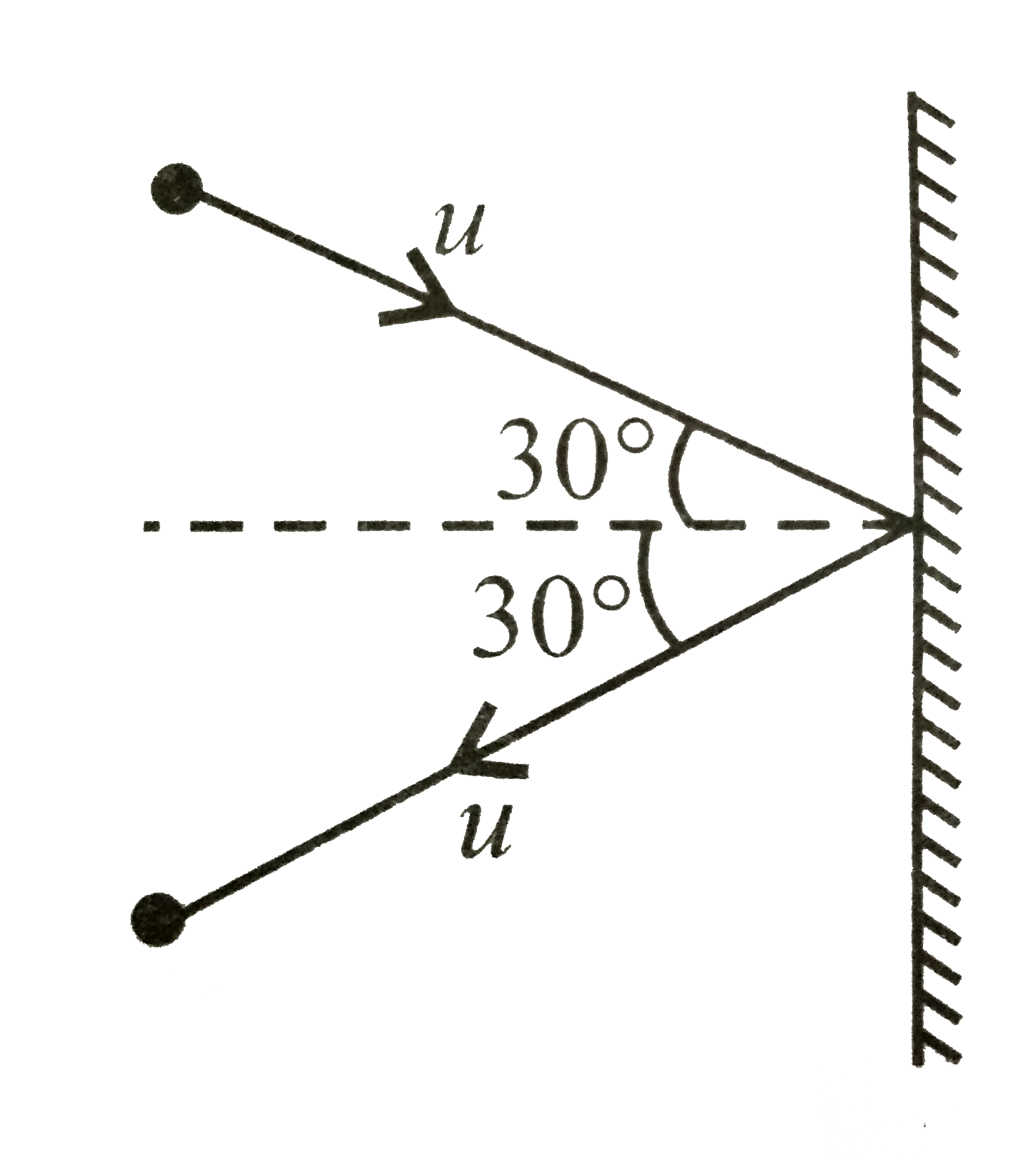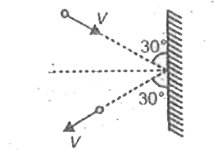A batsman deflects a ball by an angle of 45∘ without changing its initial speed which is equal to 54kmh. What is the impulse imparted to the ball ? (Mass of the ball is 0.15 kg)
To solve the problem of finding the impulse imparted to the ball when a batsman deflects it at an angle of 45∘ without changing its initial speed, we can follow these steps:
Step 1: Convert the speed from km/h to m/s
The initial speed of the ball is given as 54km/h. We need to convert this speed into meters per second (m/s) using the conversion factor 1km/h=518m/s.
u=54km/h×518=15m/s
Step 2: Understand the deflection
The ball is deflected by an angle of 45∘. This means that the direction of the ball changes, but the speed remains the same.
Step 3: Break down the initial and final velocities into components
- The initial velocity vector →u can be represented as:
→u=15m/s^i+0^j
- After deflection, the final velocity vector →v can be represented as:
→v=15m/scos(45∘)^i+15m/ssin(45∘)^j
Since cos(45∘)=sin(45∘)=1√2:
→v=15(1√2)^i+15(1√2)^j
Step 4: Calculate the components of the final velocity
Calculating the components:
→v=15√2^i+15√2^j
Step 5: Calculate the change in momentum
The impulse →J is equal to the change in momentum:
→J=m(→v−→u)
Where m=0.15kg.
Calculating the change in momentum:
→J=0.15((15√2−15)^i+(15√2−0)^j)
Step 6: Simplify the expression
Calculating the ^i component:
15√2−15=15(1√2−1)
Calculating the ^j component:
15√2−0=15√2
Step 7: Calculate the magnitude of the impulse
The magnitude of the impulse can be calculated as:
|→J|=
⎷(0.15⋅15(1√2−1))2+(0.15⋅15√2)2
Step 8: Final calculation
Substituting the values and calculating:
|→J|=0.15⋅15⋅
⎷(1√2−1)2+(1√2)2
After performing the calculations, we find:
|→J|≈4.16kg m/s
Conclusion
The impulse imparted to the ball is approximately 4.16kg m/s.
---
The initial speed of the ball is given as 54km/h. We need to convert this speed into meters per second (m/s) using the conversion factor 1km/h=518m/s.
The ball is deflected by an angle of 45∘. This means that the direction of the ball changes, but the speed remains the same.
- The initial velocity vector →u can be represented as:
→u=15m/s^i+0^j
- After deflection, the final velocity vector →v can be represented as:
→v=15m/scos(45∘)^i+15m/ssin(45∘)^j
Since cos(45∘)=sin(45∘)=1√2:
→v=15(1√2)^i+15(1√2)^j
Calculating the components:
→v=15√2^i+15√2^j
The impulse →J is equal to the change in momentum:
→J=m(→v−→u)
Where m=0.15kg.
→J=0.15((15√2−15)^i+(15√2−0)^j)
Calculating the ^i component:
15√2−15=15(1√2−1)
Calculating the ^j component:
15√2−0=15√2
The magnitude of the impulse can be calculated as:
|→J|=
⎷(0.15⋅15(1√2−1))2+(0.15⋅15√2)2
Substituting the values and calculating:
|→J|=0.15⋅15⋅
⎷(1√2−1)2+(1√2)2
|→J|≈4.16kg m/s
The impulse imparted to the ball is approximately 4.16kg m/s.
Topper's Solved these Questions
Similar Questions
A batsman deflects a ball by an angle of 90∘ without changing its initial speed, which is equal to 54 km/hr. What is the impulse to the ball ? Mass of the ball is 0.15 kg.
View SolutionA batsman deflects a ball by an angle of 60° without changing its initial speed of 20 ms−1. what is the impulse imparted to the ball if its mass is 0.15 kg?
View Solution
Knowledge Check
A batsman hits back a ball straight in the direction of the bowler without changing its initial speed of 12ms−1 . If the mass of the ball is 0.15 kg , determine the impulse imparted to the ball . (Assume linear motion of the ball).
A1.8N sB2.8N sC3.6N sD4.2N sA ball of mass m strikes a rigid walJ with speed u and rebounds with the same speed. The impulse imparted to the ball by the wall is
A2muBmuCzeroD−2muA ball of mass m strikes a rigid walJ with speed u and rebounds with the same speed. The impulse imparted to the ball by the wall is
 Amu sin30∘tB2mu sin30∘tCmu cos30∘tD2mu cos30∘t
Amu sin30∘tB2mu sin30∘tCmu cos30∘tD2mu cos30∘t
A batsman hits back a ball straight in the direction of the bowler without changing its initial speed of 12ms−1 . If the mass of the ball is 0.15 kg , determine the impulse imparted to the ball . (Assume linear motion of the ball).
View SolutionA batsman hits back a ball straight in the direction of the bowler without changing its initial speed of 12ms−1 . If the mass of the ball is 0.15 kg , determine the impulse imparted to the ball . (Assume linear motion of the ball).
View SolutionA player kicks a ball at an angle of 37∘ to the horizontal with an initial speed of 15ms−1 . Find its time of fight.
View SolutionA particle of mass m strikes a wall with speed v at an angle 30∘ with the wall elastically as shown in the figure. The magnitude of impulse imparted to the ball by the wall is

View SolutionSTATEMENT - 1 : A ball of mass m is moving towards a batsman at a speed v. The batsman strikes the ball and deflects it by an angle θ without changing its speed. The impulse imparted to the ball is zero.
because
STATEMENT - 2 : Impulse = change in momentum.
View Solution
